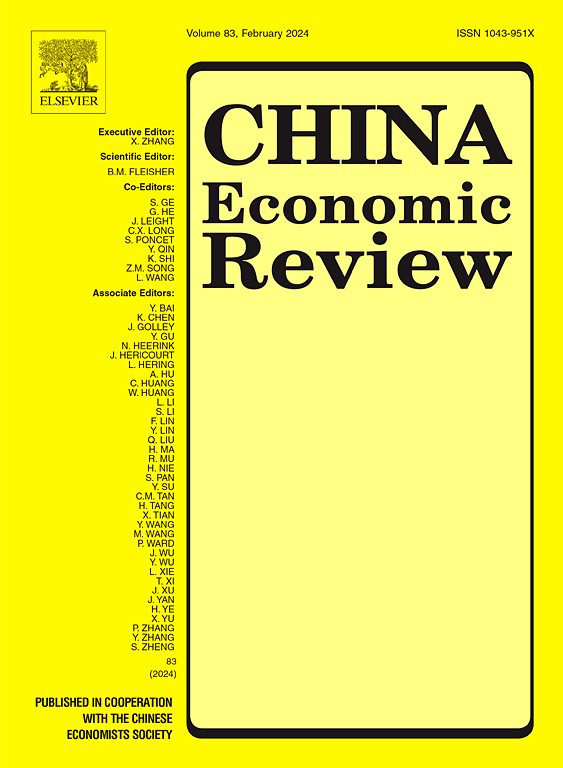Narrowing the digital divide: The growth and distributional effect of internet use on income in rural China
IF 5.5
1区 经济学
Q1 ECONOMICS
引用次数: 0
Abstract
Improving income and equality among rural residents remain significant concerns for economists and policymakers. The recent proliferation of information and communication technologies, such as the Internet, provides a promising way to increase income but leads to concern about the digital divide. Notably, data limitations and regional heterogeneity have restricted empirical studies from determining the growth and distributional effects of Internet penetration on the income of rural households, and how these effects correlate with the first-(physical access), second-(use patterns and skills), and third-(use outcomes) level digital divides. This paper empirically investigates the causal effect of Internet use on rural household income by employing the difference-in-difference, propensity score matching, and instrumental variables methods, using panel data from the China Family Panel Studies between 2010 and 2018. We find robust results that Internet use significantly increases the income of rural households, which means the presence of the first-level digital divide exacerbates inequality, although it is narrowing. Additionally, different Internet use purposes that correspond to the second-level digital divide also have an impact on income. Interestingly, our analysis for heterogeneity reveals that rural households with lower education levels and incomes, and those residing in less-developed areas benefit more from Internet use, suggesting no significant third-level digital divide was found between vulnerable populations and those who are not. Overall, these findings have important policy implications. Providing communication infrastructure and popularizing Internet-use skills in rural areas may help narrow the digital divide and advance the goal of inclusive growth.
缩小数字鸿沟:中国农村互联网使用对收入的增长和分配效应
改善农村居民的收入和平等,仍然是经济学家和政策制定者关注的重大问题。最近互联网等信息和通信技术的普及为增加收入提供了一个有希望的途径,但也引发了对数字鸿沟的担忧。值得注意的是,数据限制和区域异质性限制了实证研究,无法确定互联网普及率对农村家庭收入的增长和分配影响,以及这些影响如何与一级(物理接入)、二级(使用模式和技能)和三级(使用结果)数字鸿沟相关。本文利用2010 - 2018年中国家庭面板研究的面板数据,采用异差法、倾向得分匹配法和工具变量法对互联网使用对农村家庭收入的因果关系进行实证研究。我们发现了强有力的结果,即互联网的使用显著增加了农村家庭的收入,这意味着一级数字鸿沟的存在加剧了不平等,尽管它正在缩小。此外,与第二级数字鸿沟对应的不同互联网使用目的也会对收入产生影响。有趣的是,我们对异质性的分析显示,教育水平和收入较低的农村家庭以及居住在欠发达地区的家庭从互联网使用中受益更多,这表明弱势群体与非弱势群体之间没有明显的第三级数字鸿沟。总的来说,这些发现具有重要的政策意义。在农村地区提供通信基础设施和普及互联网使用技能可能有助于缩小数字鸿沟,推进包容性增长的目标。
本文章由计算机程序翻译,如有差异,请以英文原文为准。
求助全文
约1分钟内获得全文
求助全文
来源期刊

中国经济评论
ECONOMICS-
CiteScore
10.60
自引率
4.40%
发文量
380
期刊介绍:
The China Economic Review publishes original works of scholarship which add to the knowledge of the economy of China and to economies as a discipline. We seek, in particular, papers dealing with policy, performance and institutional change. Empirical papers normally use a formal model, a data set, and standard statistical techniques. Submissions are subjected to double-blind peer review.
 求助内容:
求助内容: 应助结果提醒方式:
应助结果提醒方式:


